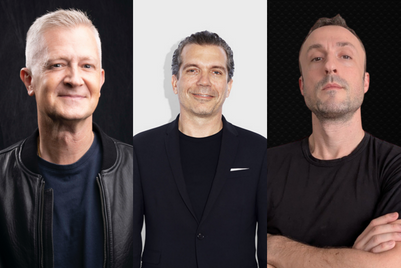
Speaking at the Knowledge Seminar on day two of Goafest 2015 presented by SureWaves, Jonny Stark, SVP - Apac at Razorfish, began by shedding light on the context within which marketing and advertising currently operates.
He said, "Social media marketing has been around for a while now with people being on their devices 24x7, uber-connected, expecting everything at the touch of a thumb or a swipe at a mobile device. It is a real opportunity for everyone involved in marketing to engage these people."
Among challenges, Stark listed scale. While over 7 trillion ads were served digitally in Europe last year, the engagement rate was less than 0.1 per cent (with 0.0 per cent in some places), he added, quoting ComScore. "That is a very small amount of people who actually care about our ads. The other problem is things like spam profiles and the fact that some ads weren't even seen because they weren't presented to a real life human," he noted.
Quoting Razorfish's research released in November 2014, he pointed to the problem of consumer apathy with over 50 per cent of consumers trying to avoid advertising at all costs. The study reflects that users are instead turning to each other and trusting complete strangers for their insights, observed the digital practitioner.
He summarised the problems with the marketing and advertising approaches saying: "We're still selling, promoting and annoying people. But we convince ourselves that we're having a conversation."
On utilising content optimally, Stark said, "The Guardian and The Huffington Post have taken their editorial processes and adapted them to be digital first. It is about driving digital engagement first. With YouTube, the great thing is that it is user generated so people can be selective about the content they view."
Stark listed four brands that 'seem to have gotten it right' on the digital and social platforms. He spoke about Spotify and Uber as brands that are answering a genuine consumer need, and TripAdvisor and Airbnb as being user-powered and hence, sound in strategy of how to approach consumer engagement that benefits both the brand and the consumer.
"We need to consider content and services and start combining them. When content, community and commerce combine, we get a really powerful force", he stated, outlining the context in which advertising and marketing should operate.
Stark went on to list how brands and agencies could start making a difference.
He said, "(Brands need to) Answer a genuine need and do not contribute to content clutter. As agencies we still get brands asking us to solve a brand problem. What we're not doing is saying, 'What is the consumer problem that is contributing to your brand problem?'"
One of the most important changes the speaker advocated was a 'human approach' to delivering content. "We need to treat people like humans and not just targets and be willing to collaborate with those targets," noted Stark.
The speaker advised a content and community-led approach which later dovetails into commerce. "When we lead with 'what does the consumer need and what is the problem that we are trying to solve?' and 'How do we serve useful content enabling a community around it?'... it is then that we can leverage community and enable commerce. Too often as brands, we launch straight into commerce trying to make people buy by hammering them with messages. Eventually, they will buy something cracking under the pressure of 6 trillion ads in one year. But it doesn't work that way."
He listed a few pointers for agencies and brands with respect to their digital marketing.
For agencies:
- Move away from traditional campaign concepting cycle
- Thinking in 'lines' (having that punch tagline should not be the sole aim)
- Move to open briefs (framework by which one can continuously 'concept')
For brands:
- When brands try to be publishers what you get is a lot of marketing material which is boring and dull
- It is about thinking like a publisher and not about trying to be one
Stark highlighted the need to evolve and adapt to the changing environment to be able to address generation Z. He surmised, "Generation Z are masters of technology and not slaves like the generations before them. Gen Z is using their virtual and their real world seamlessly without even thinking about it. They're on deliberately closed environments where it is more difficult to reach them and they are happy about that. We have to think very carefully about how we are trying to engage them but not putting them off."


.jpg&h=334&w=500&q=100&v=20250320&c=1)

.jpg&h=334&w=500&q=100&v=20250320&c=1)
.jpg&h=334&w=500&q=100&v=20250320&c=1)
.jpg&h=334&w=500&q=100&v=20250320&c=1)
.jpg&h=334&w=500&q=100&v=20250320&c=1)

.jpg&h=334&w=500&q=100&v=20250320&c=1)
.jpg&h=334&w=500&q=100&v=20250320&c=1)
.jpg&h=334&w=500&q=100&v=20250320&c=1)
.png&h=268&w=401&q=100&v=20250320&c=1)



.jpg&h=268&w=401&q=100&v=20250320&c=1)
.jpg&h=268&w=401&q=100&v=20250320&c=1)
.jpg&h=268&w=401&q=100&v=20250320&c=1)

